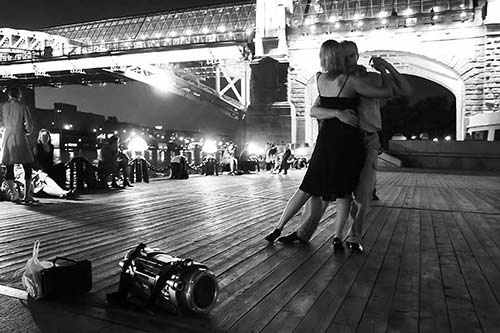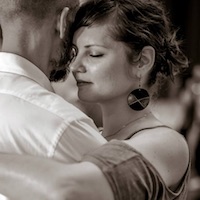“Embodiment” is a word that has been stalking me for the past decade or so.
Ever since my first experience with yoga I have been trying to understand this mysterious concept. It has become quite fashionable to use this term in the yoga/new age circles.
But what does “embodiment” actually mean in terms of the practical, every day life experience?
There are many books written on the subject and many people teaching about this. But even though the ideas are explained beautifully, the language used is usually just as vague as the original concept in question. So my understanding has been mostly on the conceptual, mental level.
Somehow this reminds me of “homecoming,” a strange ritual I was introduced to when I moved to Texas. I remember being bewildered at all the excitement around this big event which, after asking several people for an explanation and not getting anything definitive, entailed a football game and the gifting of “mums” to the cute/most popular girls, among other things.
Anyway. Coming back to “embodiment.”
Over the years I have gathered that embodiment: is good for me, I should want it, somehow it means I will be healthier, other people admire it, yoga has something to do with it, it has something to do with “enlightenment,” it is something that I need to do every day/multiple times a day/all the time (depending on the teaching), it is the opposite of everything bad.
I do take into account that English is my second language and perhaps as a non-native speaker there is a subtlety that I am missing.
Fast forward to now, 11 years after starting yoga, 10 years of teaching yoga, six years of tango, one year of contact improvisation/blues dancing/ballet/etc., and experimenting endlessly with various practices, I have arrived at the conclusion that “embodiment” is…being in a body, nothing more, nothing less. It is a given. It is inevitable. And all the confusion about the meaning of “embodiment” seems to be a state of not being okay with this simple fact that all of us are bodies.
This insight is similar to one that was shared by Arthur Kilmurray a number of years ago at the Dallas Yoga Center. The topic was “meditation,” another very mysterious concept. Rather than describing meditation as something very serious that requires a lot of practice, Arthur talked about meditation with an air of simplicity and play. I still remember his jovial demeanor, arms gesturing wildly as he said (and I am paraphrasing):
“Meditation is not something you do, it is something that happens when the conditions are right, like sleep. You wouldn’t expect yourself to close your eyes right now and be immediately asleep. In order to sleep you must create the correct environment for sleep to arise: you have to lie down, be warm, have a pillow, turn off the light…then sleep comes. So it is with meditation, you sit, you create support for your body, you focus on something, you listen to something, whatever allows you to be comfortable inside and out. Then, meditation arises.”
So it is, it seems to me, with embodiment—being a body—which is very similar to the experience of meditation. It is a state where I am aware of myself as an organism occupying multiple dimensions simultaneously: physical, emotional, mental, external, internal. The conditions for this experience to arise do not follow a rule of thumb. Sometimes the requirements are strange and are counter to the “right” thing, but only the body, your body, can really tell you whether you are embodied.
Here is what helps me support embodiment (just to name a few things that my body likes):
Curling up to sleep on my right side, having the pillow just right under my head (and the smell of my pillow!).
Sitting for meditation in the morning with a cup of coffee in my hands (love the sensation and the smell!) and a scarf (love the sensation of warmth on my chest).
Sketching on the bus.
Exploring movement in my room while listening to weird electronic music.
Watching dance videos/cute animal videos/cool things people do videos.
Eating a ton of spinach (which means I sometimes carry a bag of spinach with me in my backpack).
Drinking cafe con leche at a coffee shop.
A smell of flowers in the street.
Dancing for hours.
Listening to people’s stories.
Walking in my five-toe shoes.
Drinking hot tea in the kitchen at 4 a.m. after coming back from milonga.
Hugging people.
Listening to people hum the melodies of tango songs in my ear when dancing.
Taking a really hot shower.
Massaging my face with olive oil.
The sounds of brewing coffee in the kitchen.
The sensation of the body stretching and twisting over a wooden floor.
Those first few seconds of being embraced in tango as the the arms slide looking for connection.
Hearing La Cumparisita at 4 a.m., signaling the end of the night (I often say that I fantasize my life ending to that song, somehow it is comforting to me).
So how do I know I am experiencing embodiment? Over time I have come to recognize the following symptoms:
Total physical ease even if there is sensation of discomfort.
Deep enjoyment and pleasure of whatever activity my body is executing, whether it is a plie in ballet class or waiting for my hands to dry at one of those hand dryers in the bathroom.
Expanded physical awareness of space which allows for effortless movement.
Enjoyment and acceleration of learning.
Feeling of gratitude and acceptance.
A more flexible and creative mind.
In short, deriving all sorts of pleasure from being fully plugged into life.
So how do you experience being in a body? What enhances your experience, expands your awareness, brings pleasure to your organism?
Relephant:
5 Ways to Practice Embodied Intention During your Yoga Practice.
~
Author: Yelizaveta Nersesova
Editor: Travis May
Photos: Flickr/Zabara Alexander







Read 0 comments and reply